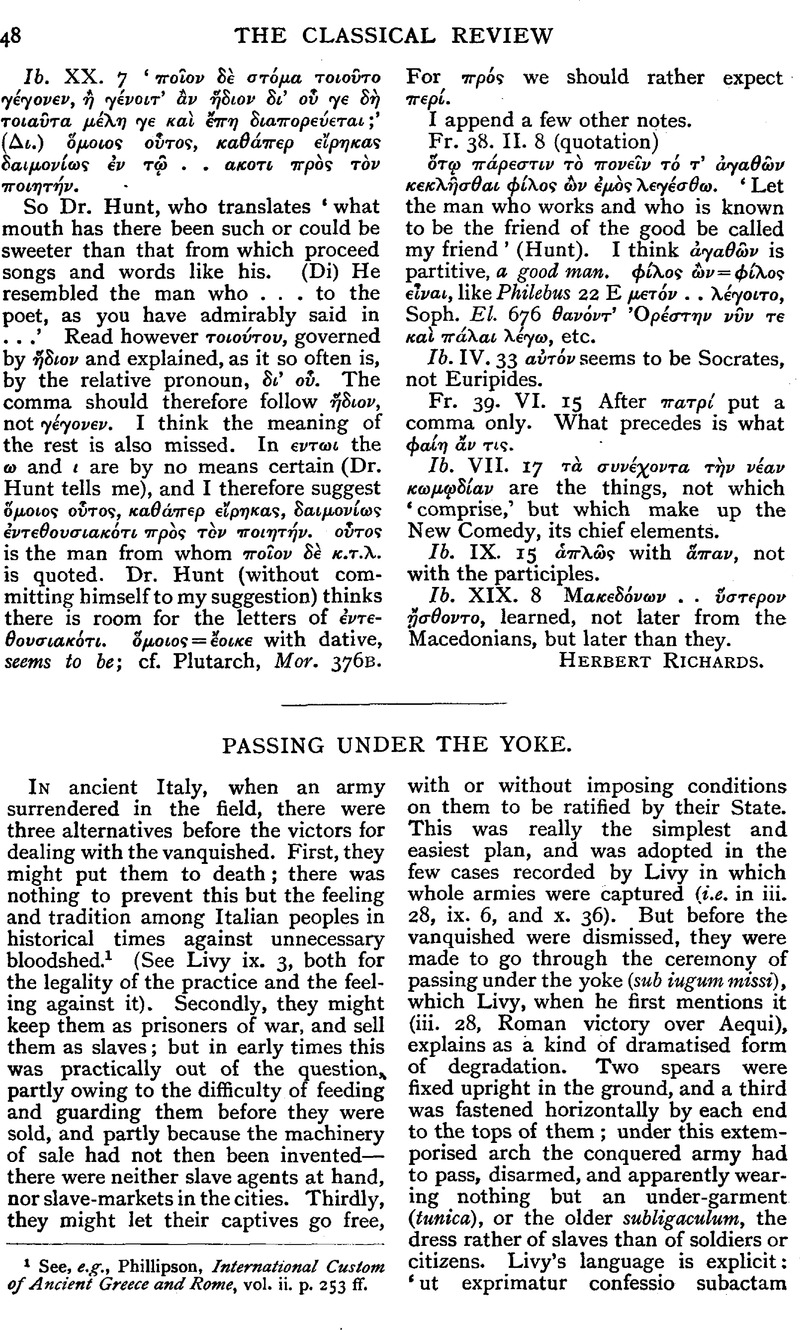No CrossRef data available.
Published online by Cambridge University Press: 27 October 2009

page 48 note 1 See, e.g., Phillipson, , International Custom of Ancient Greece and Rome, vol. ii. p. 253 ff.Google Scholar
page 49 note 1 The best account of the position is in Hülsen-Jordan, , Röm. Topographie, I. iii. 322 ff.Google Scholar; where also the texts relating to the tigillum are quoted in full (Liv. i. 26; Festus, p. 297; and Dionys. III. 22. 7).
page 49 note 2 Auct. de viris illustribus, iii. 4. It is singular that the tigillum itself seems to have been the object of worship: the Fasti Arvales have a note on Oct. 1, ‘tigillo sororio ad compitum Acili.’ Henzen, Acta Fratr. Arv., p. ccxxxviii. Pais, Storia di Roma, i. 298–9, gets out of his depth in speculating on these worships and their connexion with the gens Horatia. My own opinion on these puzzling points is expressed in my Roman Festivals, p. 237 ff.
page 49 note 3 See the Journal of Roman Studies, vol. i., p. 58 ff., and my Religious Experience of the Roman People, p. 28.
page 50 note 1 See Hülsen-Jordan, op. cit., I. iii. 494 and reff.; also Domaszewski, , Abhandlungen sur Röm. Religion, p. 222 ff.Google Scholar
page 50 note 2 I.e., my idea is that the Greek ornamentation, as it is usually called, the pillars, and architrave, were really an ornamented form of the old wooden gate or arch. This is seen well in the old Roman gate of Thessalonica, figured in Schreiber, Atlas of Classical Antiquities Pl. 50. See Companion to Latin Studies, p. 522.
page 50 note 3 See Van Gennep, , Rites de Passage, chap. ii. p. 19 ff.Google Scholar; Frazer, , Golden Bough, 2nd edition, vol. iii. p. 400 ff.Google Scholar The examples given on p. 401 from Kamskatka are specially interesting.
page 50 note 4 This was originally suggested by Roscher, in article ‘Ianus’ in his Mythological Lexicon (vol. ii. p. 21)Google Scholar with reference to the tigillum sororium. He quoted Grimm for a case of squeezing oneself through a split tree to get rid of some disease. This is practically the same kind of explanation as Dr. Frazer has applied to the passage under the yoke. I may just add that in my own village of Kingham I have known an intelligent man carry his child seven times across a bridge to get rid of the whooping-cough—which is probably a reminiscence of the same notion.